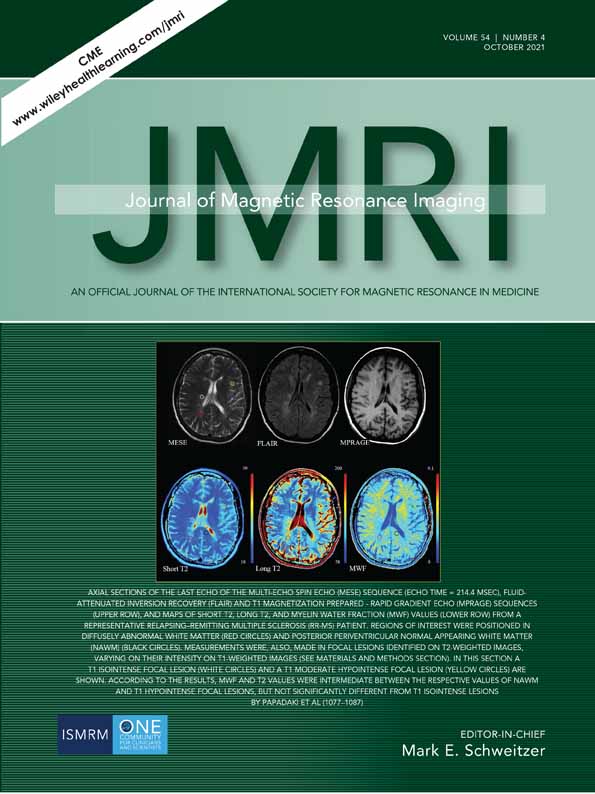Survey of Acoustic Output in Neonatal Brain Protocols
Abstract
Background
Auditory and non-auditory safety concerns associated with the appreciable sound levels inherent to magnetic resonance imaging (MRI) procedures exist for neonates. However, current gaps in knowledge preclude making an adequate risk assessment.
Purpose
To measure acoustic exposure (duration, intensity, and frequency) during neonatal brain MRI and compare these values to existing hearing safety limits and data.
Study Type
Phantom.
Phantom
Cylindrical doped water phantom.
Field Strength/Sequence
Neonatal brain protocols acquired at 1–3 T. Scans in the model protocol included a diffusion tensor imaging scan, a gradient echo, a three-dimensional (3D) fast spin echo, 3D fast spin-echo single-shots, a spin echo, a turbo spin echo, a 3D arterial spin labeling scan, and a susceptibility-weighted fast spin-echo scan.
Assessment
The sound pressure levels (SPLs), frequency profile, and durations of five neonatal brain protocols on five MR scanners (scanner A [3 T, whole-body], scanner B [1.5 T, whole-body], scanner C [1 T, dedicated neonatal], scanner D [1.5 T, whole-body], and scanner E [3 T, whole-body]) located at three different sites were recorded. The SPLs were then compared to the International Electrotechnical Commission (IEC) hearing safety limit and existing data of infant non-auditory responses to loud sounds to assess risk.
Statistical Tests
Mann-Whitney U test to assess whether the dedicated neonatal scanner was quieter than the other machines.
Results
The average level A-weighted equivalent value (LAEQ) across all five MR scanners and scans was 92.88 dBA and the range of LAEQs across all five MR scanners and scans was 80.8–105.31 dBA. The duration of the recorded neonatal protocols maintained by neonatal scanning facilities (from scanners A, B, and C) ranged from 27:33 to 37:06 minutes.
Data Conclusion
Neonatal protocol sound levels straddled existing notions of risk, exceeding sound levels known to cause non-auditory responses in neonates but not exceeding the IEC MRI SPL safety limit.
Level of Evidence
5
Technical Efficacy
Stage 5




